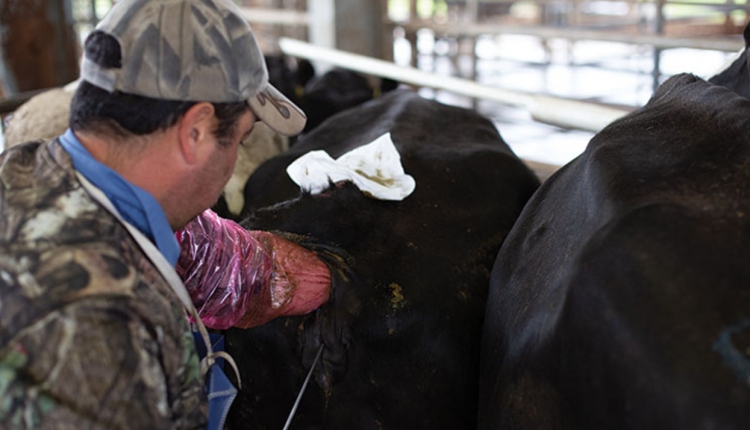The author is an associate professor of dairy cattle genetics at Penn State University.

The accelerated rate of inbreeding raises multiple issues. Inbreeding elevates the likelihood that genetic recessives, which compromise calf or cow health, will emerge. It is also associated with a loss of genetic diversity, reducing the amount of long-term genetic progress that can be made.
These concerns over rapid inbreeding brought scientists, farmers, and industry leaders together for a recent Discover Conference titled “Managing genetic diversity for future dairy and livestock breeding.”
Structural challenges
While there is general interest in slowing the pace of inbreeding, there are significant headwinds that make prioritization of genetic diversity easier said than done.
The dairy business is one of tight financial margins with consolidation occurring for both farms and genetic companies. The need to remain financially viable in the near term drives intense focus on the very top of genetic ranking, so investing in the development of bulls with poor market potential is simply not a cost that genetic companies can absorb.
There have been efforts to develop outcross sires, but farmers purchase little semen from such bulls. Discussions before and during the conference drove home a consistent message that breeders appreciate the rapid rate of genetic progress we are currently experiencing and view the compromise of progress in return for lower inbreeding rates a risky proposition.
The hesitancy to compromise over genetic progress is compounded by disagreement over the seriousness of elevated inbreeding. There is an argument that intense selection for fitness related traits such as fertility reduces the level of concern we should have over inbreeding. And — in the long term — we can always just crossbreed to eliminate inbreeding and infuse genetic diversity. That suggestion is less than attractive to pure breed enthusiasts and ignores that successful crossbreeding programs require strong pure breeds or lines.
An option similar to crossbreeding is the development of lines specific to each breeding company or bull stud. Some argue that we’ve begun to see that development already. Genetic distance between lines of different companies could grow and produce less inbreeding in commercial herds. Unfortunately, such programs limit the genetic marketing potential of individual breeders and herds.
Interestingly, there’s evidence that it is quite possible to control inbreeding without compromising the rate of genetic progress. Rates of progress for French dairy breeds such as Montbéliarde rival Holsteins but with lower inbreeding rates. A general strategy referred to as optimal contribution helps to balance a bull’s impact on genetic progress with the number of daughters it sires and number of its sons that enter A.I. service.
The challenge is that such programs require a centralized breeding program where few entities control a breed’s genetic selection program. We do not have that in the United States, which makes the implementation of optimal contribution challenging.
Shared concerns
Even though these structural challenges are difficult and come across as pessimistic, the general atmosphere of the Discover Conference was quite positive. There were many areas of agreement among farmers, genetic companies, and the research community.
There is a consensus that we need more specific and advanced measures of inbreeding. Two animals can have identical inbreeding percentages but have very different inbreeding outcomes. For example, one cow may have inbreeding that traces back to many ancestors born decades ago — referred to as ancient inbreeding — whereas a second cow with the same total percentage has more recent inbreeding. It is generally thought that ancient inbreeding is less detrimental than recent inbreeding. In that sense, recommendations that focus on a specific level of inbreeding, such as a threshold of 6.25%, lack specificity.
Our current estimates of inbreeding depression are based on older data that ignores these two types of inbreeding. One outcome from the conference will be an effort to focus research on describing inbreeding depression based on type of inbreeding rather than the absolute level.
A second general area of consensus is that we need to be good stewards of our genetic resources. Multiple people pointed out that we need to maintain the trust of consumers, which is strained by reports of high inbreeding levels.
A geneticist from one of the two major international poultry breeding companies spoke on the amount of responsibility that comes from providing nearly half of the world’s poultry genetics — if such a company fails, food security is threatened. Pure breeders also understand that they are building on centuries of the breeding efforts of others and need to maintain genetic diversity for the next generation of breeders to thrive.
Another general conclusion shared by most is that we have too much concentration on the top of our genetic rankings. The reality is that our genomic evaluations are imperfect, and bull rankings shift once daughters begin milking. The top-ranked bulls generally remain very good, but in retrospect, there are many examples of those that were used as sires-of-sons too much or too little. That general idea will be a topic for a future column.
Exploring answers
While there is agreement that we concentrate too much on the very top, how we avoid the temptation to generate more young bulls from the very best sires is less certain. One possibility is that we run industry wide optimal contribution evaluations to determine how much a bull should be used, but without firm restrictions. In the short term, this would be for educational purposes. It will tell us how much a bull should be used in theory compared with how much it was actually used and how that influenced inbreeding rates.
Over time, we may see optimal contribution take on a larger role. Let’s consider a sports league such as the NFL as an example of how we might implement optimal contribution principles even though there are many organizations that control genetic programs.
Some leagues have a hard salary cap; there is a set amount that your favorite team can spend and not one cent more. Most countries with optimal contribution implement a “hard” cap on a bull’s use. Conversely, other sports leagues have a soft cap. There is a threshold, and if you go above that amount, you pay a luxury tax. A soft cap in relation to optimal contribution might be feasible, but probably not in the near term.
It was encouraging to see representatives from many sectors of the dairy industry, including farmers that participated in a breeder panel, breed association representatives, genetic company personnel that compete in the marketplace, university researchers, and government scientists all collaborating at the Discover Conference. We understand that solving the genetic diversity challenge will not be simple, but I am encouraged that it is not an unsurmountable task.











